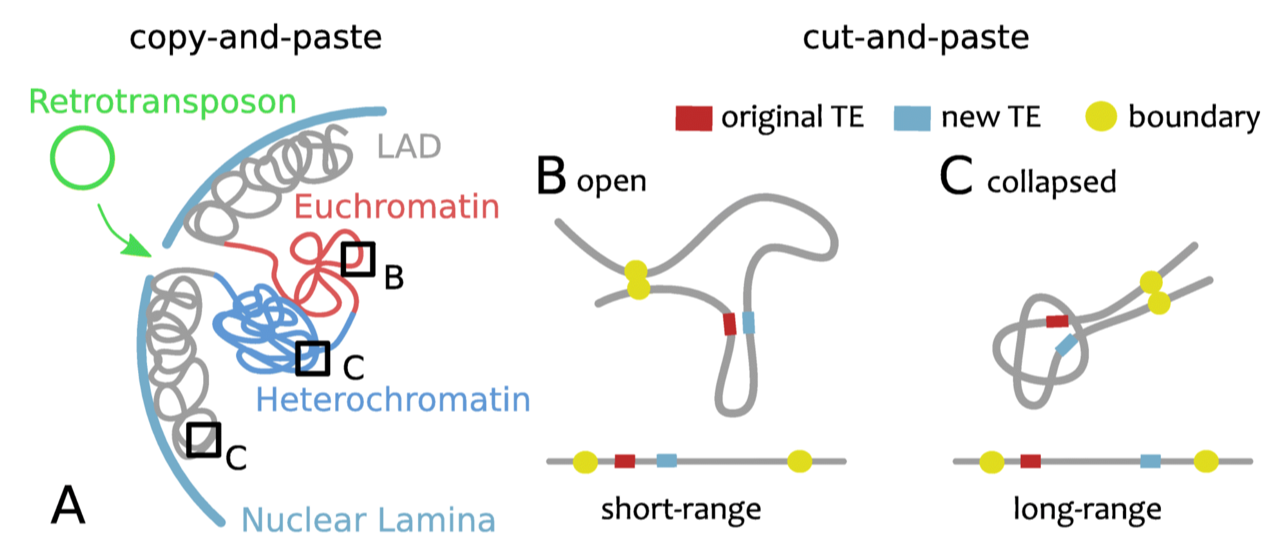In this work we review the state-of-the-art of chromosome organisation and so-called “transposable elements” (TEs), pieces of DNA that have the tendency to copy themselves and “jump” to other parts of the genome. These elements take up a large part of plants genomes (up to 70% in maize) and also in humans. Barbara McClintock was awarded the Nobel prize for the discovery and study of these elements, which are now recognised as key contributors of genome evolution but also causing cancer and other genetic diseases if they proliferate uncontrolled.
In this work we propose new computational and experimental strategies based on the physical principle of “perturb and measure” to understand the interplay of 3D genome organisation and dynamics TE integration. While most of the current works investigate how new TE integrations affect 3D genome organisation, there is a lack of knowledge about how 3D organisation affect and bias the integration site selection.
The preliminary discussion reported in this commentary is aimed to lay the foundations for a large-scale analysis of TE integration dynamics and topography as a function of the three-dimensional host genome.
Download “Article” integrating_transposable_elements.pdf – Downloaded 397 times – 1 MB
Download a copy of the manuscript

